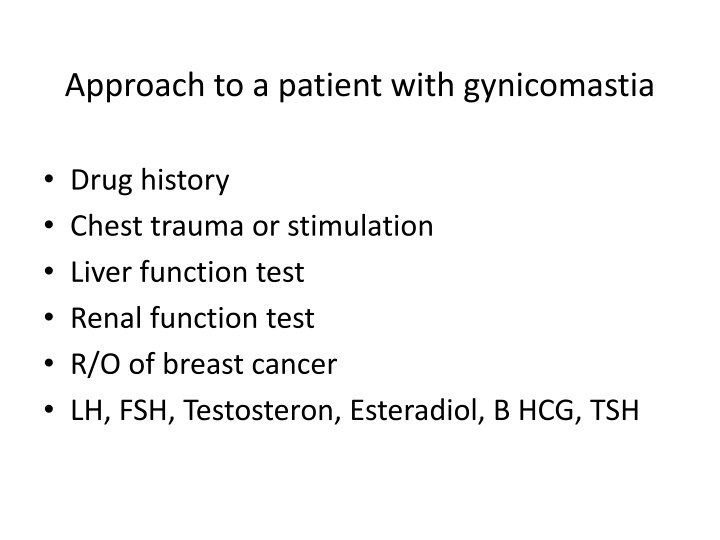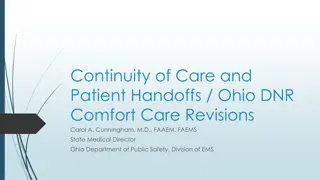Approach to a patient with gynicomastia
Comprehensive approach to evaluating gynecomastia, including history, tests for hormonal imbalances, and ruling out breast cancer. Also discusses pituitary adenoma, particularly cases with elevated GH and PRL levels, and recommendations for treatment.
Download Presentation

Please find below an Image/Link to download the presentation.
The content on the website is provided AS IS for your information and personal use only. It may not be sold, licensed, or shared on other websites without obtaining consent from the author.If you encounter any issues during the download, it is possible that the publisher has removed the file from their server.
You are allowed to download the files provided on this website for personal or commercial use, subject to the condition that they are used lawfully. All files are the property of their respective owners.
The content on the website is provided AS IS for your information and personal use only. It may not be sold, licensed, or shared on other websites without obtaining consent from the author.
E N D
Presentation Transcript
Approach to a patient with gynicomastia Drug history Chest trauma or stimulation Liver function test Renal function test R/O of breast cancer LH, FSH, Testosteron, Esteradiol, B HCG, TSH
Pituitary Adenoma + Elevated GH And PRL GH secreting macroadenoma + stalk compresion Mixed GH cell and PRL cell adenoma Monomorphous acidophilic stem cell adenoma Monomorphous mamosomatotroph adenoma Plurihormonal adenoma Silent somatotroph adenoma Transformation of prolactinoma to PRL and GH secreting adenoma Synchronous PRL and GH secreting adenomas Sometimes in pure GH secreting adenoma GH mimics signs and symptoms of hyperprolactinemia
Patients examined at department M, Odense University Hospital between 1996 and 2001. 78 patients with prolactinomas were included. Three females with prolactinomas developed acromegaly clinically and biochemically. These patients had a normal low GH level and/or a normal IGF-I level at first diagnosis.
Key massage There is a common group of patients with a pituitary adenoma who secrete PRL and GH unsynchronously. Some of these patients have clinical acromegaly at diagnosis and some patients diagnosed as prolactinomas will develop acromegaly. We suggest an annual IGF-I measurement as a screening test.
Endocrine Society Guideline 2014 Cabergoline is most likely to be useful in patients with just modest elevations of GH and IGF-1 levels, with or without concomitant hyperprolactinemia
Fourteen patients with active postoperative acromegaly were administered cabergoline in a 6-month, open label, dose-escalation study.
Six patients had modest hyperprolactinemia at diagnosis (26 142 ng/ml) and 5 patients had positive immunohistochemical staining of their tumor for prolactin, but in neither of these small groups was cabergoline therapy more effective at normalizing IGF-I than in those patients with apparently pure GH secreting tumors.























